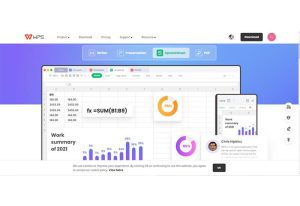Beyond the Emergency: Navigating the World of Short Term Loans
In the uncertain world of personal finance, an unexpected expense can come up at the worst possible time. For many people, typical financial options can’t help with an acute cash flow gap caused by a broken boiler, a car repair, or an unexpected medical expenditure. When you need money right away, a traditional bank loan isn’t an option because the application procedure takes too long, the requirements are too rigorous, and the loan amounts are generally too high. This is where short-term loans have become quite important, and for some people, they are even necessary. These financial instruments are not a long-term fix for financial problems. Instead, they are a powerful and useful tool for a specific purpose: to fill a temporary gap and provide a necessary lifeline in a real emergency. Anyone who wants to use these loans responsibly has to know how they work, what their benefits are, and what important things to think about.
How Short Term Loans Work: The Mechanics
Short-term loans are a type of credit that usually involves borrowing a little amount of money for a short amount of time. The way to pay back the loan is simple and usually fits with the borrower’s income cycle. You might pay it all back in one big payment on the next payday, or you could make a series of smaller, predetermined installments over the course of a few weeks or months. This repayment plan is different from longer-term loans, which are usually paid back over a number of years. These loans are very popular because they are easy to get and the application process is quick. Most of the time, the application is online, and the lender usually makes a decision on the loan application within minutes. The money is then sent to the borrower’s bank account on the same day. When time is of the essence, this quick access to money is a big plus.
However, it is important to remember that short-term loans usually have higher interest rates than regular loans. This greater fee is because this sort of lending is riskier and the loan is just for a brief time. The interest rate is not the only expense of borrowing; there may also be other costs, like penalty for late payments. This is why it’s very important for a borrower to know the full cost of the loan, which includes the main amount, all the interest, and all the fees, before signing the agreement. A good lender will be honest about these charges and give a clear breakdown of the total amount that has to be paid back. This will help the borrower make a completely informed choice.
The Benefits and Smart Use of Short-Term Loans
The strategic use of short-term loans is based on the fact that they can help with a short-term problem with a short-term solution. The main benefit is that they can help you make up for a shortfall in funds caused by an unplanned expense. For example, if a boiler breaks down a week before payday, a small short-term loan can help pay for the repair so that the family doesn’t have to wait a month for heat and hot water. In a real emergency, like an unanticipated auto repair that is necessary for getting to work, quick access to money can stop a little problem from becoming a bigger one. Because these loans are quick and easy to get, the borrower can get the money they need when they need it, without having to wait as long as they would for a regular bank loan.
Short-term loans are similarly flexible in terms of how much money you can borrow and how long you have to pay it back. People who want to borrow money can usually choose how much they need, from a modest amount of £100 to a greater amount, depending on how much they make and how much they can afford. The repayment duration is generally adjustable, so the borrower can pick a plan that works with their payday or one that is easier for them to handle financially. Also, for some people with bad or limited credit histories, carefully using short-term loans might help them improve or rebuild their credit. By paying back the loan on time and in full, the borrower shows credit reference agencies that they can be trusted with money. This can help their credit score over time, which may provide them access to more financial goods in the future.
Important Things to Think About and Borrowing Responsibly
It’s evident that short-term loans have benefits, but using them is something that needs a lot of care and a promise to borrow responsibly. The most crucial thing is to know exactly how much the loan will cost. You need to carefully compare the increased interest rates and costs against the benefits of getting money quickly. A borrower must be completely sure that they can make the payments on time. If you don’t pay back a short-term loan, you could face serious financial problems, such as late penalties, a lower credit score, and even legal action in some situations. The most crucial thing about the whole deal is whether the borrower can pay back the loan.
It’s also important to know how dangerous a debt spiral may be. A debt spiral is a bad circumstance where someone takes out a new short-term loan to pay off an old one. This cycle, which is caused by increased interest rates and fees, can soon grow to too much debt to handle. Short-term loans are not a long-term answer to financial problems; they are only useful for a specific, real necessity. People who borrow money should not use it to buy things they don’t need, such vacations or expensive things. Instead, they should look into other options first, like getting a loan from a credit union, utilising an emergency fund, or talking to their bank about an overdraft. A responsible use of short-term loans means promising to use them just for a limited period and to pay them back on time and in full.
How to Apply and What to Expect
Usually, the procedure of applying for a short-term loan is quick and easy. The borrower fills out an online form with their name, address, job status, and bank information, among other things. After that, the lender runs a number of automated checks to make sure the borrower is who they say they are and to see if they can afford the loan. A good lender will do a thorough affordability check, which is an important way to make sure that the borrower can pay back the loan without getting into trouble financially. If the application is granted, the borrower gets a clear loan agreement that lists all the terms and circumstances, such as the total amount owed, the repayment plan, and any costs. Before signing this agreement, the borrower must read it all the way through and comprehend it. The money is often sent to the borrower’s bank account very rapidly, often in just a few minutes or on the same day.
The Importance of Rules and Fair Lending
In the UK, the Financial Conduct Authority (FCA) is in charge of the short-term lending industry. There are rules about interest rate caps, fees, and the need for thorough affordability assessments that protect consumers. A lender who is honest and follows the rules will always be open about their fees and how they do business. The borrower should always look for a lender who is licensed and authorised by the FCA. This gives them some peace of mind that they are working with a reliable and competent provider. The post will tell borrowers to only work with lenders that follow these moral rules.
Conclusion: A Tool for a Certain Job
In conclusion, short term loans are a strong and useful financial tool, but they should only be used for a certain purpose. They are an essential answer for real crises or for filling a temporary financial gap because they are easy to get, quick to get money, and flexible. But people who use them must promise to borrow responsibly, know exactly how much it will cost, and be sure they can pay back the loan on time. They are a fast cure, but they are not a long-term answer to financial problems. You should only use them if you fully understand the terms and circumstances. Short-term loans can be a lifesaver if you utilise them wisely, but you need to have a clear and honest reason for taking one out.













